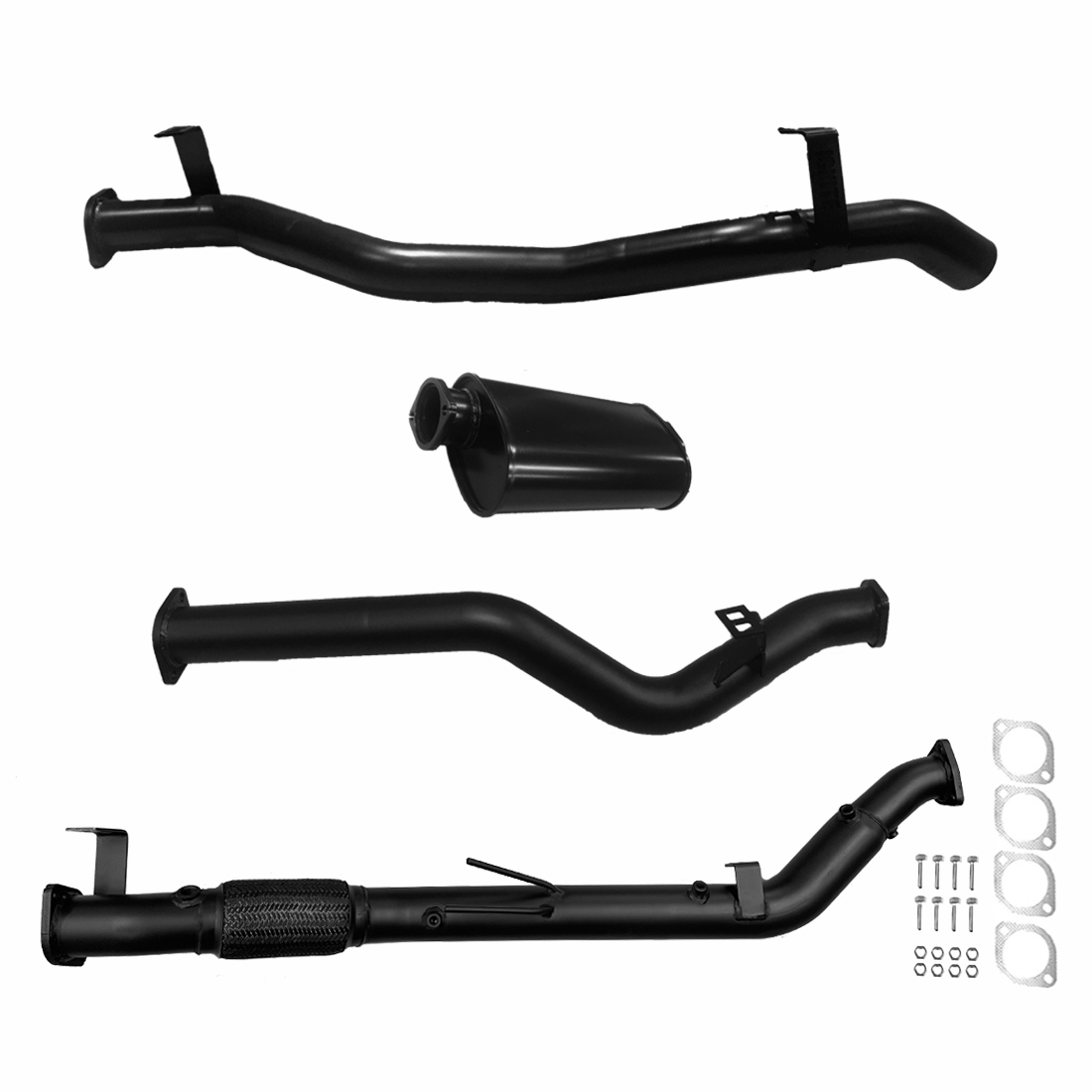
Toyota Landcruiser Exhaust 79 Series V8 D/Cab Turbo Back No Cat & Muffler Black Aluminised Steel

- Suits Toyota LandCruiser 70 Series (76, 78, 79) - Disables DPF system electronically – no ECU remap required - Prevents limp mode, check engine lights & fault codes - Plug & play install – connects to DPF pressure sensor plug - No cutting, wiring, o
Take control of your LandCruiser’s performance and say goodbye to frustrating DPF issues. The DPF delete sensor module is designed for the Toyota LandCruiser 1VD-FTV V8 76 / 79 Series DPF-equipped models (2008/2016+) and offers a simple solution to disable the DPF system electronically—without requiring ECU tuning or a remap.
DPF Delete module for 08/2016+ Toyota Landcruiser 1VD-FTV V8 – 76 / 79 Series. Used to simulate valid sensor signals after the DPF has been removed, preventing DTC’s and limp mode. The ECU thinks the DPF is still fitted and everything is normal.
It comes in a waterproof enclosure, and is mounted in the engine bay near the brake booster. Wires connect to the MAF sensor, EGT sensors, differential pressure sensor and exhaust fuel addition injector. The MAF sensor signal is not modified, it is only used as an input to the module to generate valid DPS and downstream EGT readings.
Due to availability of connectors, this module is not completely plug-and-play. Some basic cutting and soldering of wires is required for fitment. Please review the installation instructions (which can be downloaded below) and ensure you are comfortable fitting the module before purchase. The location of wiring modification has been chosen to make installation as easily accessible as possible.
This module is not suitable for 200 Series V8 Landcruiser models.
⚠️ This module is sold to be fitted to unregistered vehicles for off-road use on private property only. Removal of the DPF is an offence on registered vehicles and will make your vehicle unroadworthy.
DISCLAIMER :
This product is intended to be fitted to unregistered vehicles for off-road use on private property only. The DPF is an emission control device. As such, any person who removes, disconnects or impairs the operation of it on a road-registered vehicle may be guilty of an offence under Australian law. DPF removal will render your vehicle unroadworthy. By fitting this module, you agree the vehicle is not registered in Australia and will not be used on any Australian road. Any risk associated with vehicle modification is your responsibility. We accept no liability for vehicle damage, voided warranties, vehicle repair expenses or legal expenses caused by the use of this module.
Installs in 5–10 minutes
No tools required
Connects to factory DPF pressure sensor plug
Fully reversible – unplug anytime to return to stock
✔️ Prevents limp mode & DPF fault codes after DPF removal
✔️ No ECU tune or remap required
✔️ Fast DIY install – no mechanical knowledge needed
✔️ Doesn’t permanently alter ECU or electronics
✔️ Fully reversible for warranty or inspections
Q: Will this module trigger a check engine light?
A: No. It prevents DPF-related fault codes and warning lights.
Q: Do I need to remap or tune my ECU?
A: No tuning is required—this module works independently of the ECU.
Q: Does it affect other engine sensors?
A: No—it only interacts with the DPF differential pressure sensor.
Q: Can I remove it and reinstall the DPF later?
A: Yes—simply unplug the module and reconnect the factory sensor.
Toyota LandCruiser 70 Series (76, 78, 79)
Engine: 1VD-FTV 4.5L V8 Turbo Diesel (DPF-equipped models)
Model Years: 2007–2024
Transmission: Manual
Australian-delivered vehicles
| Brand | Ignite Exhausts |
| Shipping Weight | 0.5000kg |
| Shipping Width | 0.100m |
| Shipping Height | 0.800m |
| Shipping Length | 0.170m |
| Shipping Cubic | 0.013600000m3 |
One of the most functioning parts of a vehicle is the exhaust system. Although it isn’t the most thrilling component of a vehicle, but it makes a huge difference on the quantity and quality of noise the car pro
Read Full PostOne of the things that come under the microscope quite frequently among car enthusiasts is the sound of the vehicle. While the engine does play a critical role in determining the kind of sound that a car ends u
Read Full PostThe exhaust emission system in a vehicle is designed to help the engine function efficiently. It takes care of the toxic emissions produced by a vehicle and naturally converts exhaust from the engine into gases
Read Full Post